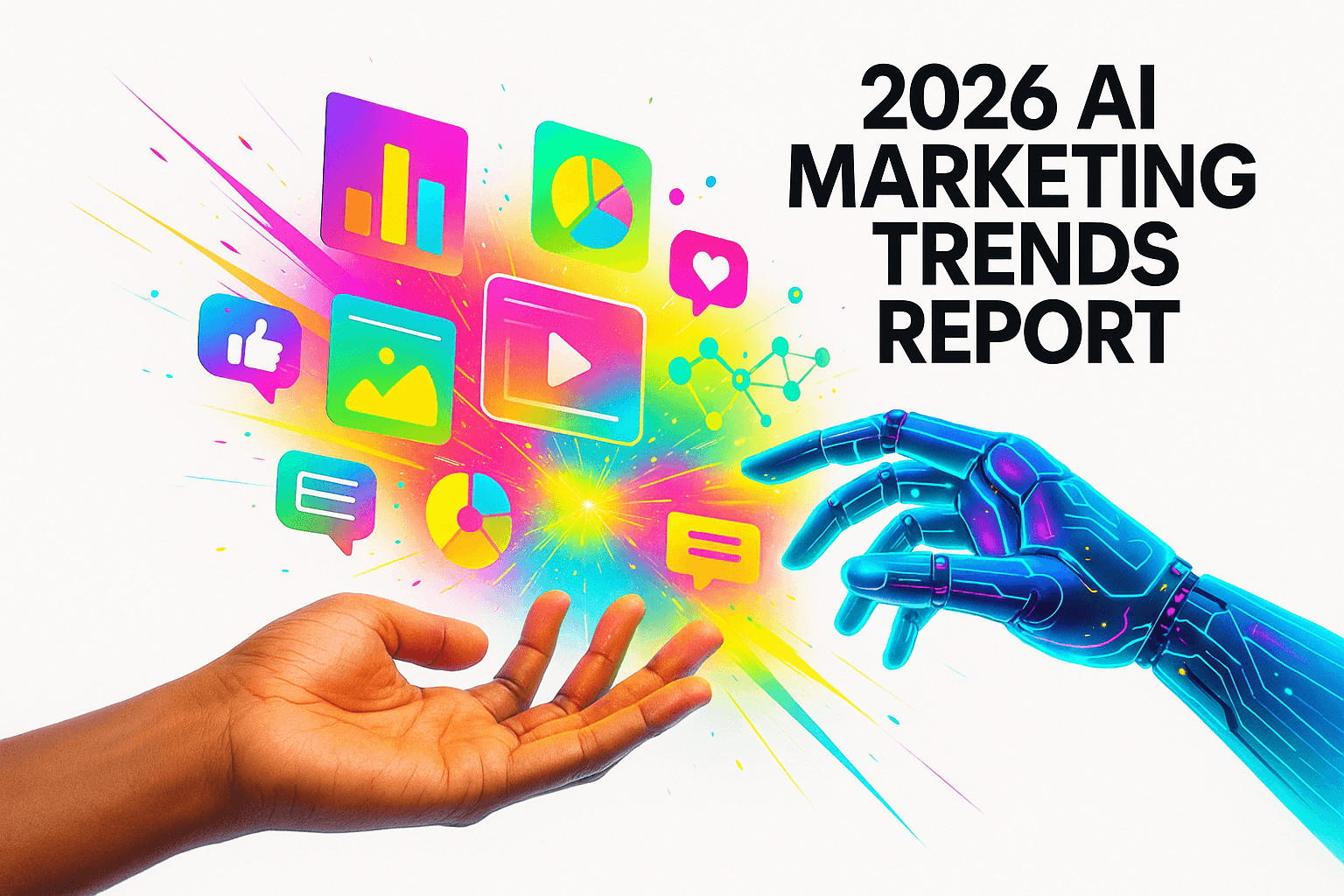11 min read
AI Marketing Automation Trends 2026: Workflows to Customer Journeys
Brands at Play : Oct 1, 2025 7:43:51 AM
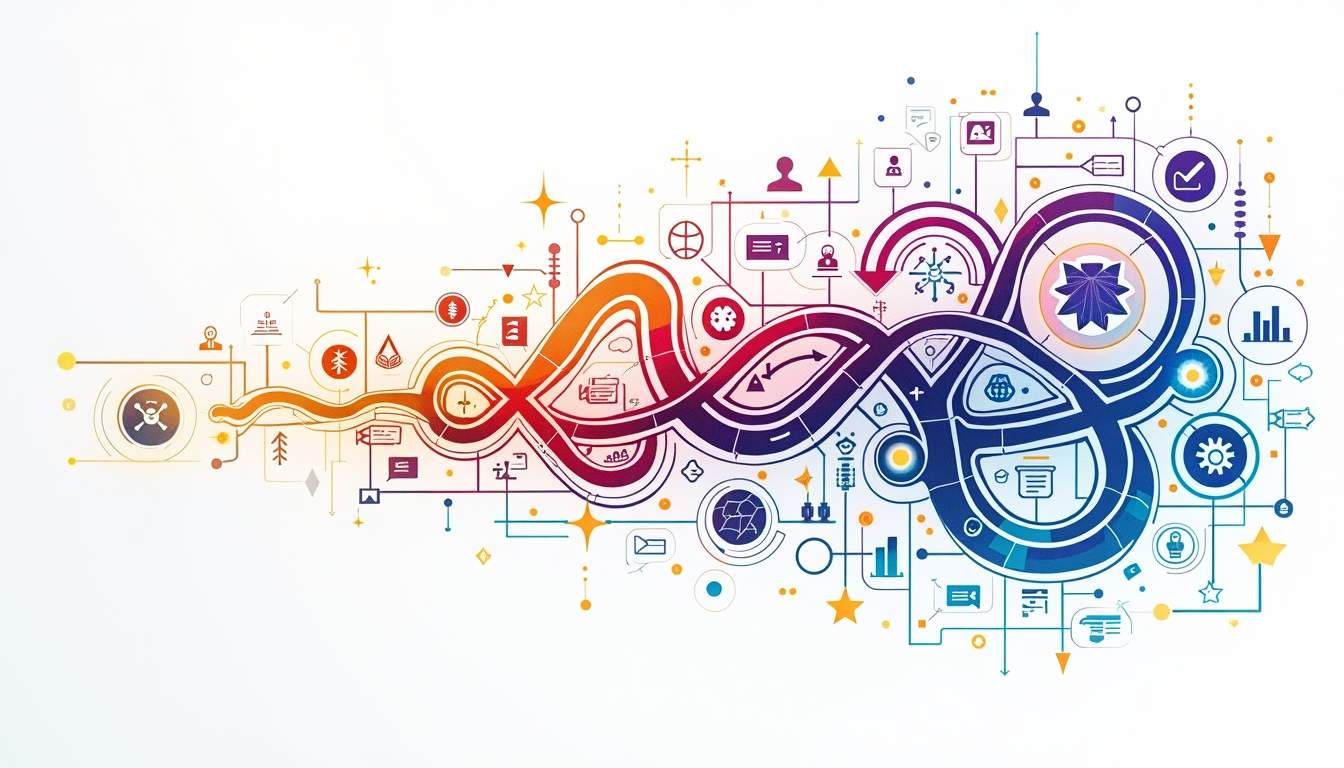
 Discover the top AI-driven marketing automation trends for 2026, from optimized workflows to personalized customer journeys.
Discover the top AI-driven marketing automation trends for 2026, from optimized workflows to personalized customer journeys.
What if your marketing could predict customer behavior before they even know what they want? While marketers sleep, AI systems are segmenting audiences, personalizing content, and optimizing campaigns in real-time—and 2026 is shaping up to be a pivotal year for AI-driven marketing automation. With a recent McKinsey report confirming that generative AI may generative AI may "contribute up to $4.4 trillion in annual global productivity," and projections indicating that genAI may also increase marketing productivity by as much as 5%-15% of total marketing spend (~USD 463B per year), businesses are racing to adopt smarter workflows that streamline operations and enhance customer experiences. From automating repetitive tasks to delivering hyper-personalized campaigns, AI is transforming every stage of the customer journey.
Stephanie Unterweger, founder and CEO of Brands at Play, Author, and an AI marketing futurist, emphasizes, “By 2026, marketing automation will no longer be about managing workflows—it will be about intelligent orchestration. AI systems are already making thousands of adaptive micro-decisions every second, optimizing bids, personalizing content, and predicting the next best action across customer journeys. The brands that win won’t just react to customer behavior—they’ll anticipate it, delivering experiences that feel personal at scale while unlocking new revenue opportunities invisible to traditional approaches.”
This article explores the most impactful trends in AI marketing automation for 2026, focusing on predictive analytics, real-time personalization, and how these AI marketing trends and innovations are reshaping workflows and customer journeys.
Predictive Analytics for Campaigns: Unlocking Future Insights
Predictive analytics has become the cornerstone of modern marketing strategies, enabling brands to anticipate customer behavior and optimize campaigns before they launch. By leveraging historical data and machine learning algorithms, marketers can forecast which audiences are most likely to convert, what messaging resonates best, and which channels will yield the highest ROI.
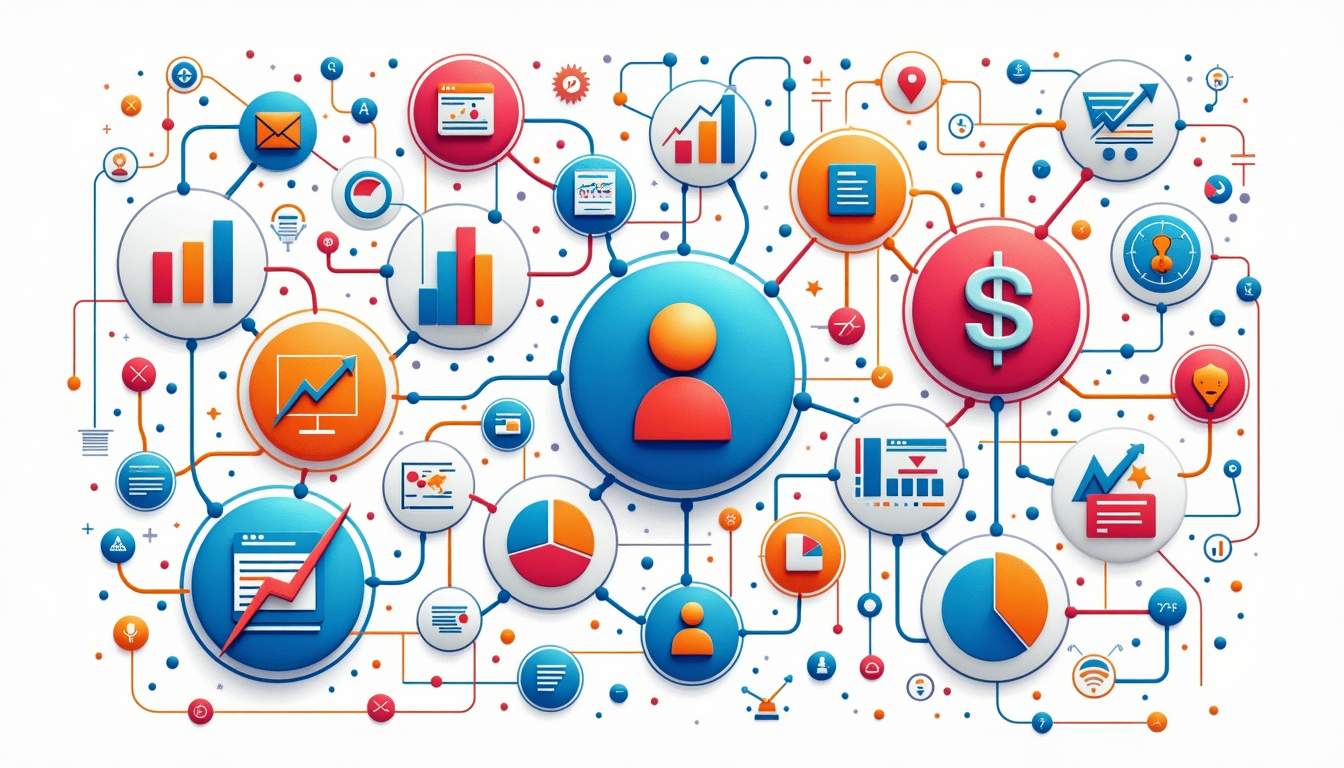
One compelling example is Spotify’s use of AI-driven predictive models to curate personalized playlists and marketing offers. Their system analyzes user listening habits and engagement patterns to predict future preferences, resulting in targeted campaigns that boost user retention and subscription rates. This personalized approach not only enhances user experience but also cultivates a deeper emotional connection between the brand and its audience, fostering loyalty in a competitive market.
According to Ken Research, the global AI in marketing market, valued at $13.27 billion in 2023, is expected to grow significantly by 2028, driven largely by advances in predictive analytics technologies. This growth underscores the increasing reliance on AI to make data-driven decisions that maximize campaign effectiveness. As more companies adopt these technologies, we can expect a shift in the marketing landscape, where agility and responsiveness become paramount, allowing brands to stay ahead of trends and consumer demands.
As businesses increasingly adopt AI technologies, the importance of understanding customer data cannot be overstated. The ability to analyze vast amounts of data in real-time allows marketers to identify trends and preferences that were previously invisible. For instance, leveraging machine learning algorithms can help brands predict which products a customer is likely to purchase next, thereby tailoring their marketing efforts to align with individual preferences. This level of customization not only enhances customer satisfaction but also fosters brand loyalty, as consumers feel understood and valued.
Implementing predictive analytics involves a few key steps:
- Data Collection: Aggregate customer data from CRM systems, social media, web analytics, and purchase history.
- Model Training: Use machine learning algorithms to identify patterns and correlations in the data.
- Prediction Generation: Forecast customer actions such as likelihood to buy, churn risk, or response to specific offers.
- Campaign Optimization: Tailor messaging, timing, and channel selection based on predictive insights.
Brands like Amazon have mastered this approach, utilizing predictive analytics to recommend products, anticipate inventory needs, and optimize supply chains, thereby ensuring campaigns meet customer demand seamlessly. This level of foresight allows Amazon to maintain its reputation for reliability and customer satisfaction, as it can proactively address potential stock shortages and enhance the shopping experience.
For marketers, the takeaway is clear: integrating predictive analytics into campaign planning not only improves targeting precision but also delivers measurable efficiency gains. Salesforce reports that AI-driven marketing automation improves campaign efficiency by 35% (Salesforce), a figure that underscores the tangible benefits of this technology. With such compelling statistics, it’s no wonder organizations are increasingly investing in data science talent and advanced analytics tools to stay competitive.
Case Study: Sephora’s Predictive AI for Personalized Campaigns
Sephora leverages AI-powered predictive analytics to tailor product recommendations and marketing messages based on customer purchase history and browsing behavior. By predicting which products a customer is likely to buy next, Sephora increases conversion rates and enhances customer satisfaction. Their AI models also help optimize email marketing timing, boosting open rates and engagement. This strategic use of data enables Sephora to personalize the shopping experience, while also creating a more efficient marketing funnel, guiding customers seamlessly from discovery to purchase.
Furthermore, Sephora's investment in predictive analytics extends beyond just product recommendations. The brand utilizes insights to enhance in-store experiences by training staff on customer preferences and trends. This holistic approach ensures that whether online or in-store, customers receive a consistent and personalized experience that resonates with their individual tastes. By harnessing the power of predictive analytics, Sephora strengthens its brand loyalty and sets a benchmark for others in the beauty industry to follow.
Real-Time Personalization with AI: Elevating Customer Experiences Instantly
Personalization has evolved from a nice-to-have to a necessity in today’s competitive market. AI enables marketers to deliver real-time, context-aware personalization that dynamically adapts to customer interactions across channels. This means customers receive relevant offers, content, and support exactly when and where they need it.
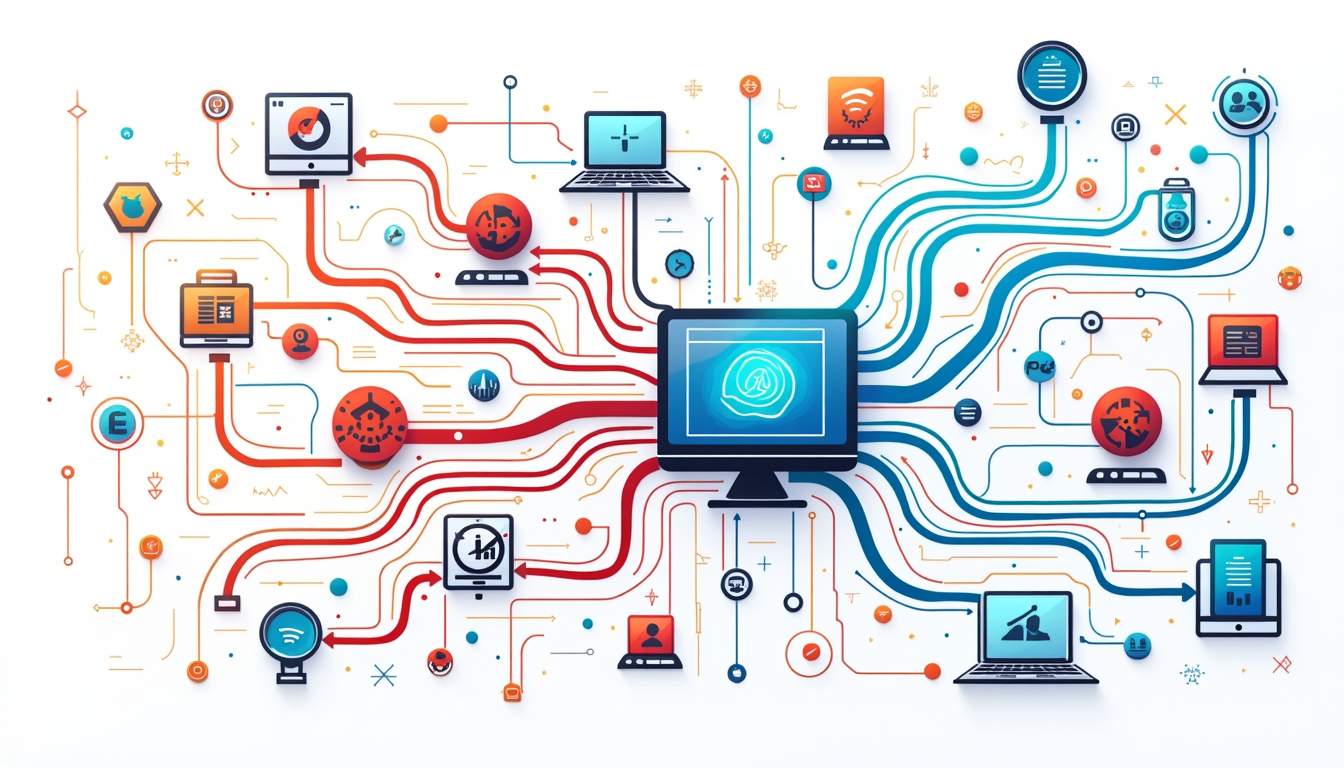
AI-powered chatbots exemplify this trend. By 2025, chatbots are expected to handle most routine customer interactions, providing instant responses and personalized assistance 24/7. These chatbots use natural language processing (NLP) to understand customer intent and sentiment, delivering tailored solutions that improve satisfaction and reduce response times.
Real-time personalization extends beyond chatbots. Retailers like Nike use AI to customize website content based on browsing history, location, and even weather conditions. Visitors in colder climates might see promotions for winter gear, while those in warmer areas are shown summer collections. This contextual relevance drives higher engagement and sales.
However, a recent systematic review highlights a gap in research on NLP applications specifically within bank marketing (arXiv.org). This signals an opportunity for financial institutions to explore AI-driven personalization to better engage customers through tailored communication and offers.
To implement real-time personalization effectively, marketers should:
- Integrate AI tools with CRM and customer data platforms for unified profiles.
- Use machine learning to analyze behavior and predict immediate needs.
- Deploy dynamic content engines that adjust messaging on the fly.
- Continuously test and refine personalization strategies based on performance data.
Case Study: Starbucks’ AI-Powered Personalized Offers
Starbucks uses AI to analyze purchase history, location, and time of day to send personalized offers via its mobile app. This real-time personalization has increased customer loyalty and average order value. By combining AI insights with creative marketing, Starbucks delivers experiences that feel uniquely tailored to each customer.
The integration of AI in Starbucks’ operations extends beyond just offers. The company also leverages machine learning algorithms to optimize inventory management and predict customer preferences. For instance, if a particular drink is trending in a specific region, the system can adjust inventory levels accordingly, ensuring that stores are well-stocked with popular items. This not only enhances customer satisfaction by minimizing stock-outs but also maximizes sales opportunities, demonstrating how AI can streamline both customer experience and operational efficiency.
Another fascinating aspect of real-time personalization is its potential in the travel industry. Airlines and hotel chains are increasingly using AI to tailor experiences based on individual traveler preferences. By analyzing past booking behaviors, social media interactions, and even travel reviews, these companies can offer personalized travel packages, upgrades, and recommendations that resonate with each customer. This level of personalization not only enhances the travel experience but also fosters a sense of loyalty, as customers feel valued and understood by brands they engage with.
From Workflows to Customer Journeys: The Future of AI Marketing Automation
AI is not just automating isolated tasks; it is reshaping entire marketing workflows and customer journeys. PwC predicts that by 2030, AI will automate 80% of repetitive tasks across industries (PwC), freeing marketers to focus on strategy, creativity, and relationship-building.
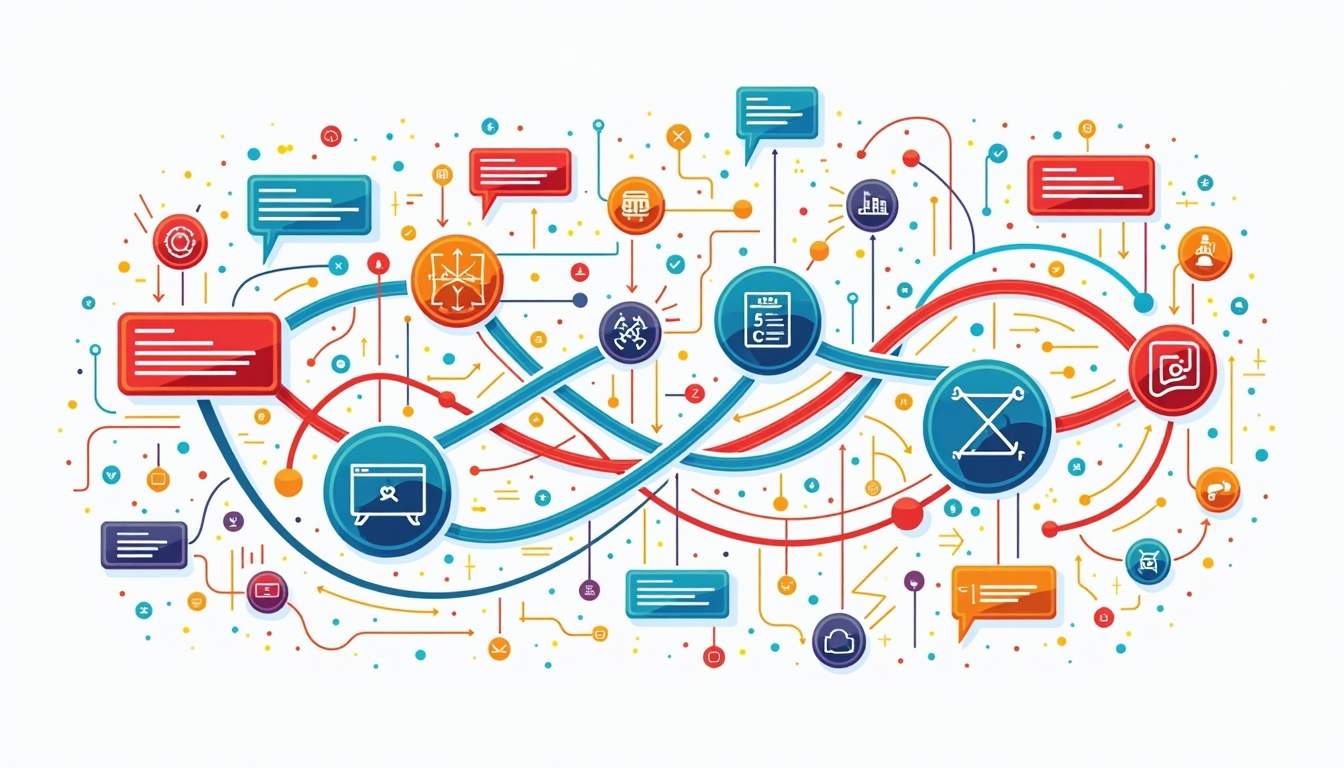
Marketing automation platforms are increasingly embedding AI to orchestrate complex workflows that span multiple channels and touchpoints. This enables seamless customer journeys where each interaction is informed by previous behavior and predictive insights.
For example, HubSpot integrates AI to automate lead scoring, email nurturing, and social media engagement, creating a cohesive experience that guides prospects through the funnel efficiently. AI-driven workflows can trigger personalized messages based on real-time events, such as cart abandonment or website visits, increasing conversion rates.
Brands at Play specializes in crafting these sophisticated AI-powered marketing strategies. Their approach combines data science with creative digital marketing and brand strategy to deliver measurable growth. Visit Brands at Play’s website to discover tailored solutions that harness AI insights for your brand’s unique needs.
Expert Insight: Stephanie Unterweger on AI’s Role in Marketing Workflows
Stephanie Unterweger notes, “The real power of AI in marketing workflows isn't just speed—it's intelligence. AI-driven automation transforms marketing workflows from rigid sequences into adaptive, intelligent journeys. AI systems can analyze millions of data signals simultaneously to determine whether a customer needs nurturing, is ready to purchase, or requires a completely different approach. This level of contextual decision-making at scale was nearly impossible with manual workflows.”
To build AI-enhanced workflows that optimize customer journeys, consider these best practices:
- Map the entire customer journey to identify automation opportunities.
- Incorporate AI-powered decision engines to personalize touchpoints dynamically.
- Use predictive analytics to anticipate customer needs and proactively engage.
- Continuously monitor and refine workflows using AI-driven performance analytics.
Case Study: Adobe’s AI-Driven Customer Journey Automation
Adobe Experience Cloud uses AI to automate and personalize customer journeys across channels. Their AI engine analyzes customer data in real-time to trigger personalized content, offers, and recommendations. This holistic approach has helped brands increase engagement and conversion rates while reducing manual workload.
In addition to Adobe, other companies are also leveraging AI to enhance their marketing automation capabilities. For instance, Salesforce employs AI through its Einstein platform, which provides insights that help marketers understand customer behavior and preferences. By analyzing vast amounts of data, Einstein can suggest the best times to reach out to customers, the most effective channels for communication, and even the type of content that resonates best with different segments of the audience. This level of personalization not only improves customer satisfaction but also drives higher sales conversions.
Responsible AI in Marketing: Governance, Explainability, and Ethics
As AI-driven marketing automation scales in 2026, executives are increasingly focused not only on results but also on responsible adoption. According to Gartner, over 70% of CMOs believe AI success depends on strong governance and ethical guidelines (Gartner, 2024). Without proper oversight, AI systems that personalize campaigns and predict customer behavior can unintentionally create risks—ranging from biased targeting to data privacy breaches.
Why AI Governance Matters
AI governance in marketing ensures that automation technologies align with business values, regulatory requirements, and customer trust. For marketing leaders, this means:
-
Clear accountability frameworks to define who oversees AI decisions.
-
Compliance with data privacy laws like GDPR and CCPA.
-
Risk management protocols to monitor model drift, accuracy, and security vulnerabilities.
The Role of Explainable AI (XAI)
One of the greatest barriers to executive adoption is the “black box” problem—when AI makes a recommendation, but marketers cannot explain why. Explainable AI (XAI) addresses this by providing transparency into decision-making, allowing teams to justify why one customer receives a certain offer while another is placed in a nurture track. This transparency not only reduces regulatory risk but also builds trust with both internal stakeholders and consumers.
Ethical AI for Customer Trust
AI ethics in marketing centers on fairness, inclusivity, and transparency. Executives must ensure their AI systems do not reinforce bias (e.g., excluding certain demographics from promotions) and that personalization respects consumer privacy. McKinsey research shows that brands that embed ethical AI practices report higher long-term customer loyalty and 20% stronger engagement rates (McKinsey, 2024). Ethical AI is not just about compliance—it is a competitive advantage.
Best Practices for Responsible AI Adoption in Marketing
-
Establish an AI ethics board or committee to oversee major initiatives.
-
Invest in explainable AI tools that allow teams to validate campaign logic.
-
Conduct bias audits of data and algorithms before deploying large-scale personalization.
-
Communicate transparently with customers about how AI is used to enhance their experiences.
Key Takeaways
- Predictive analytics is essential for optimizing campaigns by forecasting customer behavior and improving targeting accuracy.
- Real-time personalization powered by AI, including chatbots and dynamic content, enhances customer experiences and drives engagement.
- AI is transforming marketing workflows into intelligent, adaptive customer journeys that increase efficiency and ROI.
- Leading brands like Spotify, Sephora, Starbucks, and Adobe demonstrate the power of AI to deliver measurable marketing results.
- Financial institutions and other sectors have untapped potential in applying AI, especially NLP, to marketing strategies.
- Responsible AI adoption requires strong governance, explainability, and ethical safeguards.
- Executives who invest in transparent, accountable AI systems reduce risk, while also building customer trust and long-term brand loyalty.
- Partnering with experts like Brands at Play can help brands leverage AI insights alongside creative strategies for maximum impact.
The AI-First Marketing Revolution Has Arrived
The question isn’t whether AI will transform marketing—it’s whether your brand will lead or follow. As explored in this article, AI-driven marketing automation has moved from experimental pilot projects to a competitive necessity. Predictive analytics anticipate customer needs, real-time personalization delivers experiences that feel personal at scale, and intelligent workflows continuously adapt to optimize customer journeys.
The transformation is accelerating fast. McKinsey estimates generative AI could unlock $4.4 trillion in global productivity, with marketing productivity gains of 5%–15% of total spend. Salesforce reports that AI-driven automation boosts campaign efficiency by 35%, proving the ROI is already tangible.
Three factors will separate leaders from laggards in 2026:
-
Speed of adoption – Early movers are already building end-to-end AI ecosystems that unify predictive analytics, personalization, and autonomous optimization.
-
Responsible innovation – Success requires balancing AI’s power with ethical governance and explainability. Gartner notes that over 70% of CMOs believe AI success depends on strong governance, making transparency a competitive advantage.
-
Strategic integration – Winning organizations don’t just add AI tools; they reimagine their entire marketing approach around intelligent automation that fuses data, creativity, and decision-making into seamless experiences.
The stakes are high. Brands that master AI-driven personalization and automation today will set the standards others struggle to match tomorrow. The global AI in marketing market is expanding rapidly, and early strategic adoption is the key to growth, loyalty, and long-term market leadership.
For marketers ready to embrace the future, exploring AI-driven marketing automation is no longer optional—it’s imperative. Visit Brands at Play’s Knowledge Hub for one of the best marketing blogs packed with free resources, insights, and strategies to stay ahead in this rapidly evolving landscape.
 Frequently Asked Questions (FAQs)
Frequently Asked Questions (FAQs)
What is AI-driven marketing automation?
AI-driven marketing automation refers to using artificial intelligence technologies, such as machine learning and natural language processing, to automate and optimize marketing tasks and workflows. This includes campaign management, customer segmentation, personalization, and analytics. By leveraging AI, businesses can streamline their marketing processes, allowing for more efficient allocation of resources and a sharper focus on strategic initiatives. As AI continues to evolve, its capabilities in understanding consumer behavior and preferences become increasingly sophisticated, enabling marketers to craft highly targeted campaigns that resonate with their audiences.
How does predictive analytics improve marketing campaigns?
Predictive analytics uses historical data and AI models to forecast customer behavior, enabling marketers to target the right audience with the right message at the right time. This increases campaign efficiency and ROI by reducing wasted spend and improving conversion rates. Furthermore, by analyzing patterns in customer interactions, businesses can identify emerging trends and adjust their strategies proactively. This not only enhances the effectiveness of current campaigns but also informs future marketing efforts, creating a cycle of continuous improvement that can significantly boost customer engagement and loyalty over time.
Can AI personalize customer experiences in real time?
Yes. AI can analyze customer data and behavior instantly to deliver dynamic, personalized content and offers across channels. Examples include AI-powered chatbots, personalized website content, and targeted email campaigns that adapt based on real-time interactions. The ability to tailor experiences on-the-fly means that businesses can respond to customer needs and preferences as they evolve, fostering a sense of connection and relevance. Additionally, this level of personalization can lead to higher customer satisfaction and retention rates, as consumers are more likely to engage with brands that understand and cater to their individual preferences.
What industries benefit most from AI marketing automation?
While AI marketing automation is valuable across industries, sectors like retail, finance, technology, and e-commerce have seen significant benefits. However, research shows opportunities remain in areas such as banking, where natural language processing applications are still emerging. Industries such as healthcare are also beginning to harness AI for healthcare marketing, patient engagement, and personalized communication, demonstrating the versatility of AI tools and AI-driven solutions. As more sectors recognize the potential of AI to enhance customer interactions and operational efficiency, we can expect to see a broader adoption of these technologies across various fields.
How can businesses get started with AI marketing automation?
Start by assessing your current marketing workflows and data infrastructure. Identify repetitive tasks that can be automated and areas where predictive insights could improve targeting. Partnering with AI-savvy marketing agencies like Brands at Play can accelerate adoption and maximize results. Additionally, investing in training and upskilling your marketing team is crucial to fully leverage the capabilities of AI tools. By fostering a culture of innovation and experimentation, businesses can not only enhance their marketing efforts, but also position themselves as leaders in the rapidly evolving digital landscape.
 Transform Your Marketing with AI-Driven Strategies
Transform Your Marketing with AI-Driven Strategies
Ready to elevate your brand with the power of AI-driven marketing automation? Brands at Play is your partner in crafting data-driven strategies that resonate with your audience and drive sustainable growth. Our unique AI3 Assessment and integrated approach align brand strategy, technology, and digital marketing to deliver measurable results. Don't miss the opportunity to lead in the digital transformation era. Book a FREE Strategy Session with Brands at Play today and unlock your brand's full potential.
Stay Ahead of the AI Marketing Revolution
The marketing landscape is transforming at an unprecedented pace, with artificial intelligence reshaping every aspect of customer engagement and campaign optimization. Organizations that delay adoption of AI-first marketing strategies risk falling permanently behind competitors who are already leveraging AI search optimization, predictive analytics, autonomous advertising systems, and hybrid intelligence workflows to drive measurable growth.
Ready to future-proof your 2026 marketing strategy? Discover the 8 latest marketing trends for 2026 that are driving real ROI for forward-thinking organizations. From customer data platforms that unify fragmented data to conversational AI that automates customer engagement, learn how industry leaders are implementing these technologies to achieve competitive advantages that compound over time. Don't let your competition get there first—explore the comprehensive guide that CMOs are using to transform their marketing operations for sustainable growth.
Master Tomorrow's Marketing Trends Today! Subscribe to Brands at Play's AI and Digital Marketing Blog!
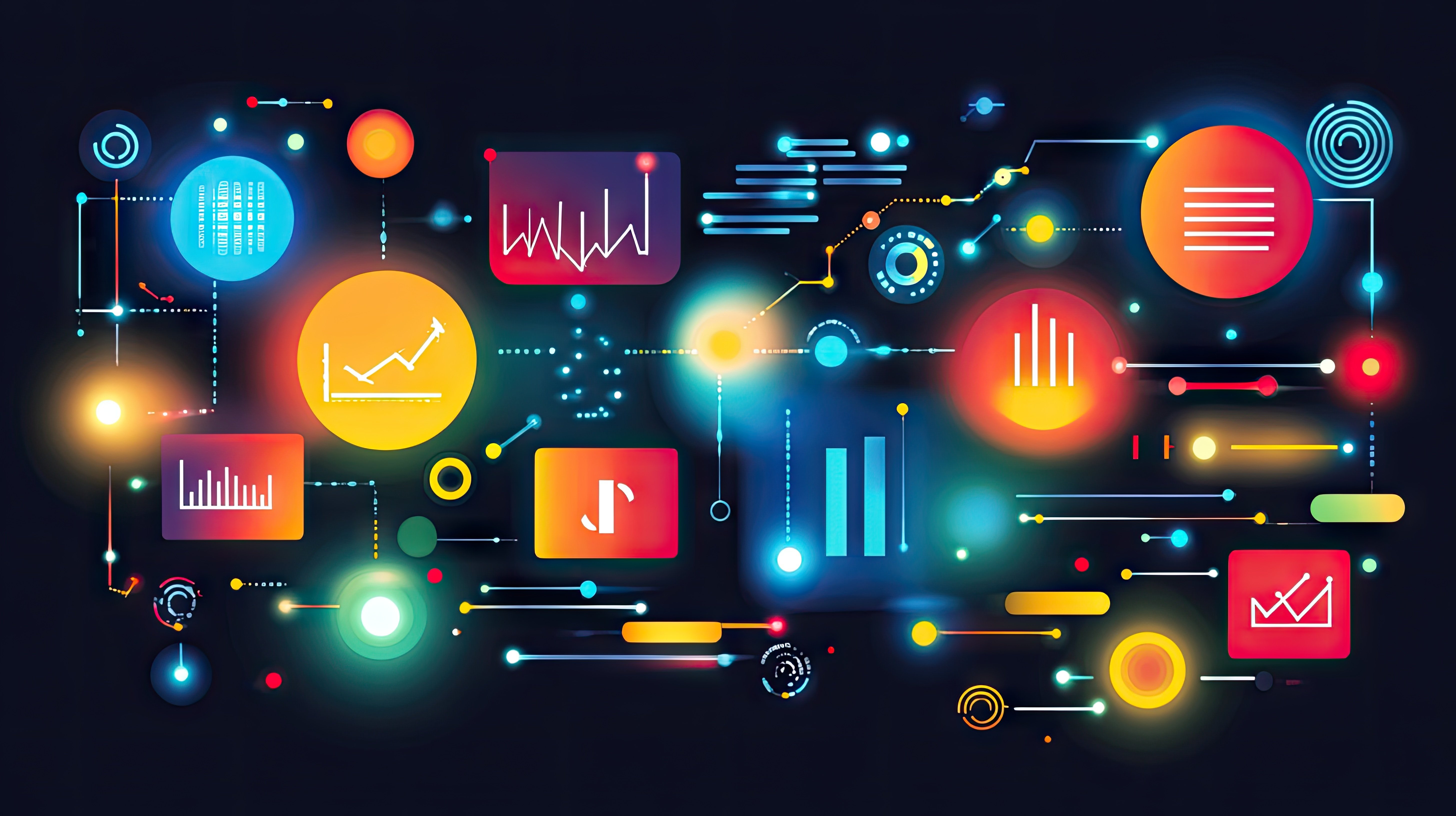
AI-Driven Personalized Marketing: A 5-Minute Guide to Implementation
Explore the ROI and best practices for AI-powered personalized marketing using real brand case data.

Customer Segmentation with AI 2026 Best Practices: Beyond Demographics
Discover the 2026 best practices for customer segmentation with AI, moving beyond demographics to boost engagement, personalization, and ROI.
